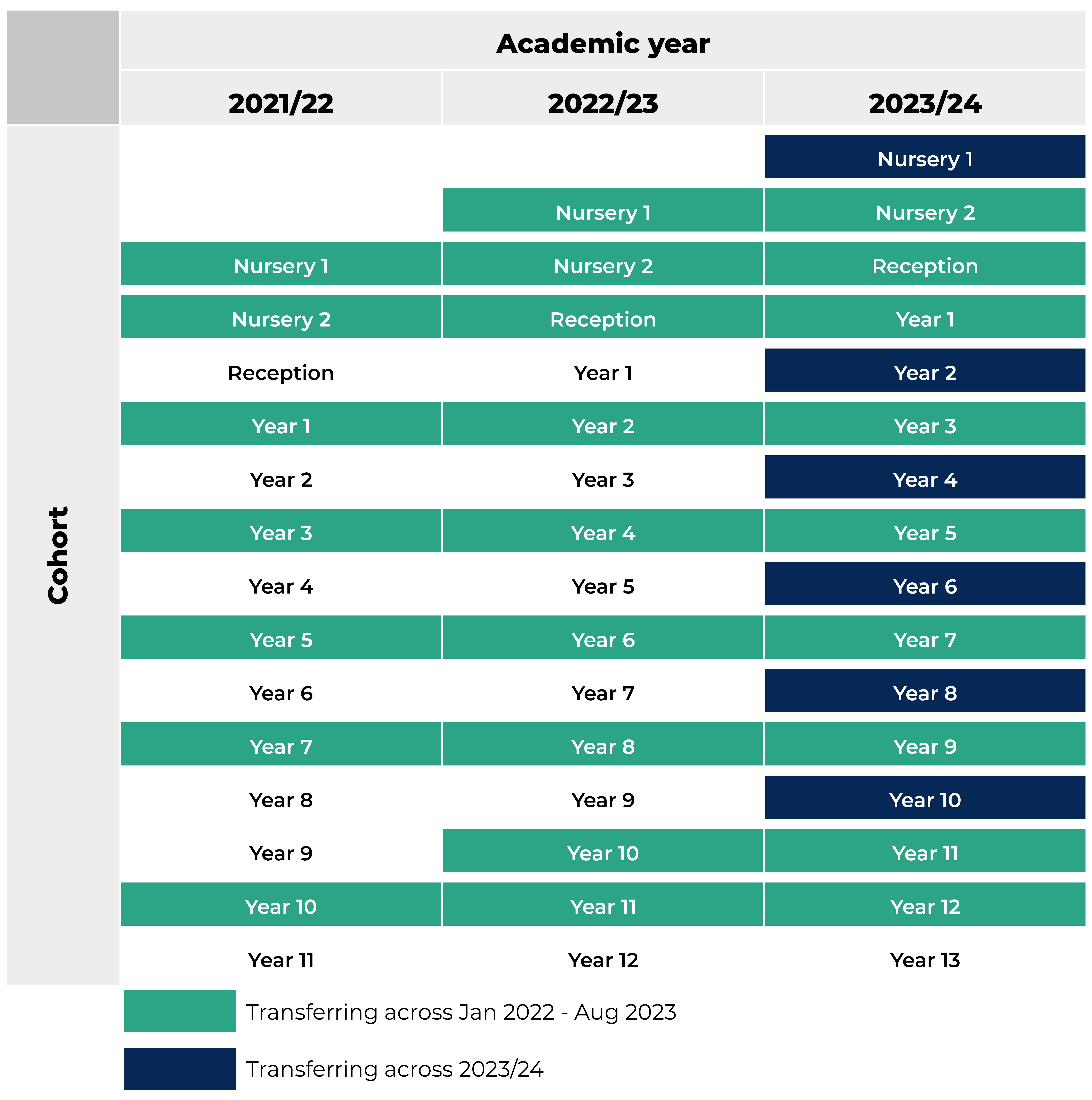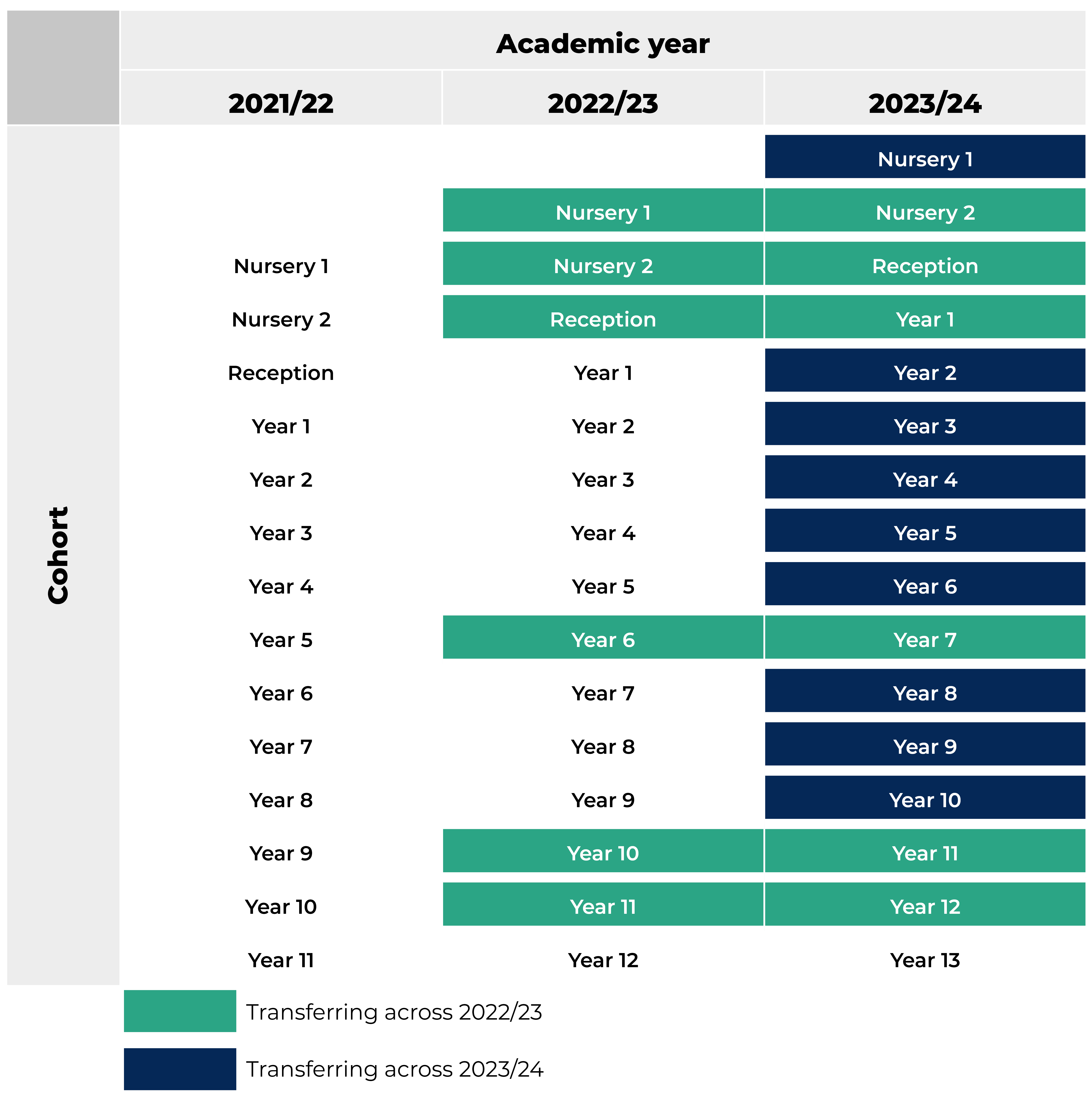“Policy represents just 10% of the task. The remaining 90% is about how to make it happen.” That’s according to Sir Michael Barber, head of the UK Government’s Delivery Unit in the early 2000s, who developed the concept of ‘Deliverology’, with a particular focus on the education field.
This description of the task of implementation relative to policy design will resonate with an education workforce faced with delivering the new Additional Learning Needs (ALN) system, which came into force in September 2021 and began in earnest last month (January 2022). Moving almost 100,000 pupils (around 20% of all pupils) to the new statutory arrangements, still in the fall out of a pandemic, will be no mean feat.
Replacing the current SEN framework with a new ALN system
We have written previously (in May and March 2021) about the reforms under the Additional Learning Needs and Education Tribunal (Wales) Act 2018. During the Senedd’s scrutiny of the legislation, the Welsh Government said the new ALN system would be a “complete overhaul” of a Special Educational Needs (SEN) system “no longer fit for purpose”.
The Act essentially retains the same definition for ALN as currently for SEN, although a key change is that every learner with ALN will be given a statutory ‘Individual Development Plan’ (IDP). Currently, only those with the most severe/complex needs (around 15%) have a statutory plan known as a ‘statement’.
How and when is the new ALN system being introduced?
The new age 0-25 ALN system is being introduced between September 2021 and August 2024.
The Minister for Education and Welsh Language announced in July 2021 that, whilst the new system would take effect in September 2021 for learners newly identified with ALN, learners currently in the SEN system would not begin transferring until January 2022.
The Welsh Government has published three implementation guides for 2021/22: a technical guide and versions aimed at practitioners and parents.
Leaners with statements are not transferring to the new system yet but will begin doing so from September 2022. Those with more mild and moderate SEN/ALN, who are currently supported under School Action or School Action Plus, are divided into four groups for the purposes of scheduling implementation.
- Group 1: Learners newly identified with ALN (from birth up to and including Year 10) have come under the new system since September 2021.
- Group 2: Learners who are detained under the criminal justice system (up to and including Year 11) have come under the new system since September 2021.
- Group 3: The majority of learners – those who attend a maintained school or Pupil Referral Unit (PRU) – will transfer either between January 2022 and August 2023, or in 2023/24, depending on which year group they are in.
Scheduled transfer to the ALN system of learners in Group 3 who are currently supported via School Action or School Action Plus (mandated year groups)

- Group 4: Learners who attend a maintained school or PRU and who are looked after or registered with more than one setting. Local authorities will generally be responsible for moving these learners over to the new system. A child in group 4, or their parents, can ask a local authority to move them to the new system at any point during the three-year implementation period.
The Welsh Government announced on 23 March 2022 its schedule for transferring learners with statements of SEN to the new ALN system.
Scheduled transfer to the ALN system of learners with statements of SEN (mandated year groups)

The Welsh Government announced on 28 March 2022 that implementation at post-16 will occur via a “flow-through” approach, whereby pupils currently in Year 10 will have transferred to the new ALN system by the time they enter sixth form or college in 2023/24. This means that pupils with SEN currently in Year 11 are unlikely to ever move to the new system. However, any young person with SEN who remains in post-16 education beyond 2024/25 will then move to the ALN system as SEN will have been fully phased out by that point.
Parents of children aged 0-5 who do not attend a nursery or school can ask the local authority now to assess if the child has ALN and, if required, provide an IDP.
What should learners and families expect?
If a learner is newly identified as having ALN, they now come under the new system and are entitled to an IDP.
For learners who already have SEN, assuming they are deemed to have ALN under the new system, schools, PRUs and local authorities must transfer them according to the mandated year groups (see above infographics). They must provide them with an IDP. For year groups not yet transferring, the statutory duties to assess and support learners under the current SEN system remain.
Concerns were expressed during scrutiny of the Draft ALN Code about a potential ‘raising of the bar’ when identifying ALN, despite the definition remaining the same as currently for SEN. This was due to the perceived extra work of providing a statutory IDP for all learners with ALN, compared to the current position of issuing statements to around 15% of the approximately 100,000 learners with SEN.
The then Minister for Education, Kirsty Williams, told the Senedd in March 2021 she did “not believe that the reforms will raise the bar for the provision of an IDP” as “the test to decide who has ALN has not changed”. The parents’ guide to implementation states “having ALN is the same as having SEN” and it is “likely” that learners with SEN who currently receive Special Educational Provision (SEP), will have ALN and therefore be entitled to an IDP.
If a school or PRU judges that a learner who currently has SEN does not have ALN and will therefore not receive an IDP, it must issue a “no IDP” notice to the child or their parents. Learners or their parents can ask the local authority to reconsider a school or PRU’s decision and, if they are unhappy with its response, can appeal to the Education Tribunal for Wales. The Tribunal’s decisions are legally binding and can be enforced via the courts, the Welsh Government or the Public Services Ombudsman for Wales.
If a school or PRU does not issue a no IDP notice to a learner in a mandated year group who currently has SEN, that learner will automatically move to the ALN system at the end of the school year and be entitled to an IDP.
What resources has the Welsh Government allocated?
In the previous Senedd, the Welsh Government allocated £20 million for its ALN Transformation programme. When introducing the legislation, the Welsh Government concluded that, following this transformation work, the new ALN system would be cost-neutral. This was based on an assumption that any increase in costs of provision would be offset by savings from less disagreement between families, and schools or local authorities.
However, the Welsh Government has provided an additional £23 million in 2021-22 (see Ministerial statements of 6 January and 23 March) and an additional £7 million in 2022-23 (see para 2.8 of this Ministerial paper for Committee budget scrutiny) to both meet existing pressures and implement the reforms.
What next?
If Sir Michael Barber is right, the vast majority of the work to improve the education of around a fifth of learners still lies ahead. After many years focused on designing the right system, ALN reform will now affect learners and their families in practice and is likely to remain high on the education agenda throughout this Senedd.
This article was updated on 8 April 2022 to reflect the content of the Minister's statement on 23 March.
Article by Michael Dauncey, Senedd Research, Welsh Parliament






